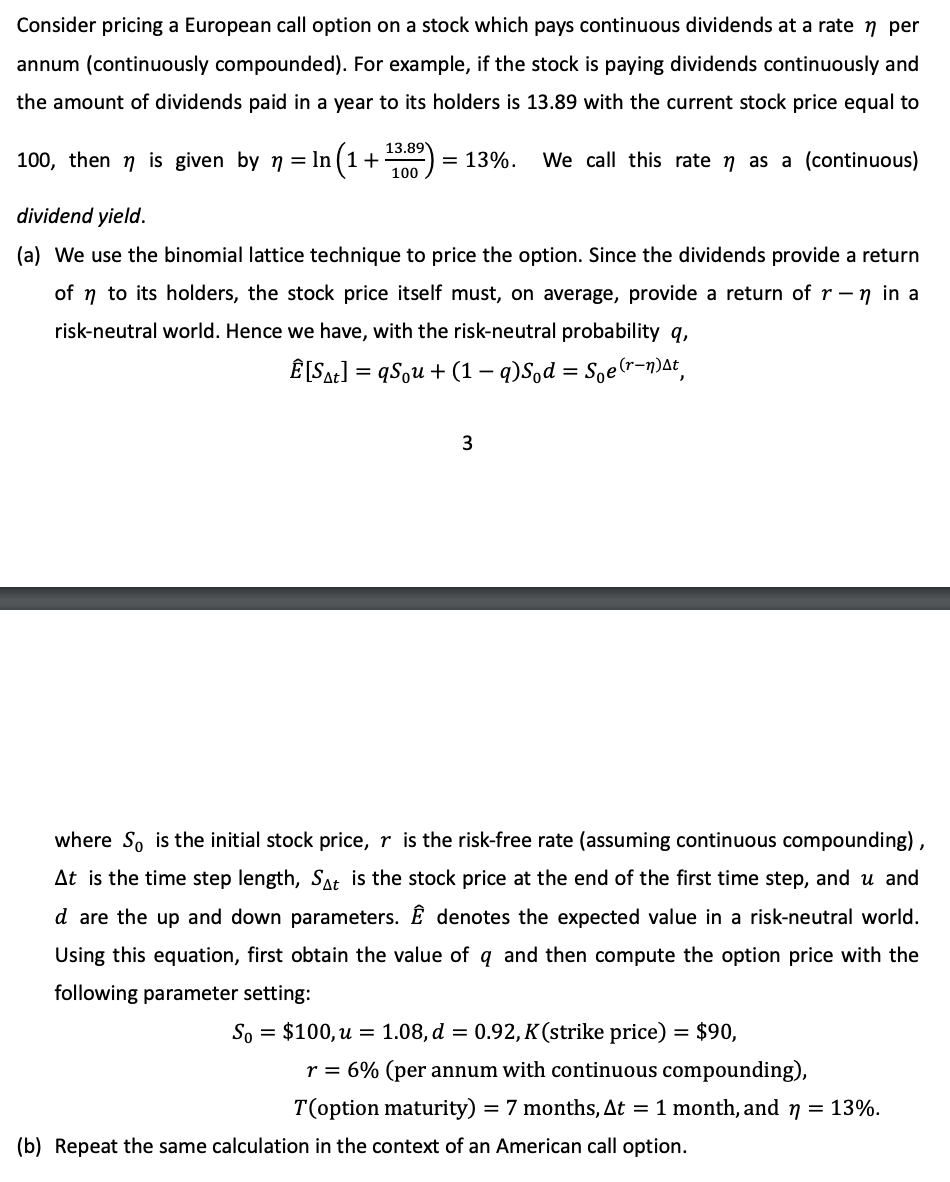
Consider pricing a European call option on a stock which pays continuous dividends at a rate n per annum (continuously compounded). For example, if the stock is paying dividends continuously and the amount of dividends paid in a year to its holders is 13.89 with the current stock price equal to 13.89 100, then n is given by n = In (1+ = 13%. We call this rate n as a (continuous) 100 dividend yield. (a) We use the binomial lattice technique to price the option. Since the dividends provide a return of n to its holders, the stock price itself must, on average, provide a return of r-n in a risk-neutral world. Hence we have, with the risk-neutral probability q, [Sat] =qSqu +(1 9)S.d = Soe(r-nat, 3 where So is the initial stock price, r is the risk-free rate (assuming continuous compounding), At is the time step length, Sat is the stock price at the end of the first time step, and u and d are the up and down parameters. denotes the expected value in a risk-neutral world. Using this equation, first obtain the value of q and then compute the option price with the following parameter setting: So = $100, u = 1.08, d = 0.92, K(strike price) = $90, r= 6% (per annum with continuous compounding), T(option maturity) = 7 months, At = 1 month, and n = 13%. (b) Repeat the same calculation in the context of an American call option. Consider pricing a European call option on a stock which pays continuous dividends at a rate n per annum (continuously compounded). For example, if the stock is paying dividends continuously and the amount of dividends paid in a year to its holders is 13.89 with the current stock price equal to 13.89 100, then n is given by n = In (1+ = 13%. We call this rate n as a (continuous) 100 dividend yield. (a) We use the binomial lattice technique to price the option. Since the dividends provide a return of n to its holders, the stock price itself must, on average, provide a return of r-n in a risk-neutral world. Hence we have, with the risk-neutral probability q, [Sat] =qSqu +(1 9)S.d = Soe(r-nat, 3 where So is the initial stock price, r is the risk-free rate (assuming continuous compounding), At is the time step length, Sat is the stock price at the end of the first time step, and u and d are the up and down parameters. denotes the expected value in a risk-neutral world. Using this equation, first obtain the value of q and then compute the option price with the following parameter setting: So = $100, u = 1.08, d = 0.92, K(strike price) = $90, r= 6% (per annum with continuous compounding), T(option maturity) = 7 months, At = 1 month, and n = 13%. (b) Repeat the same calculation in the context of an American call option







